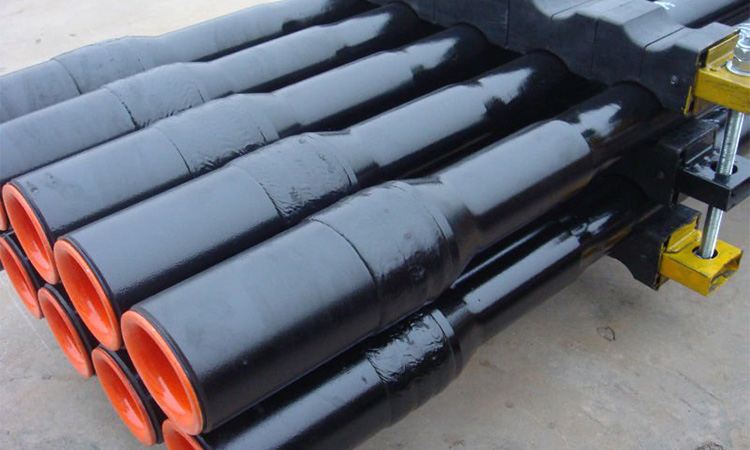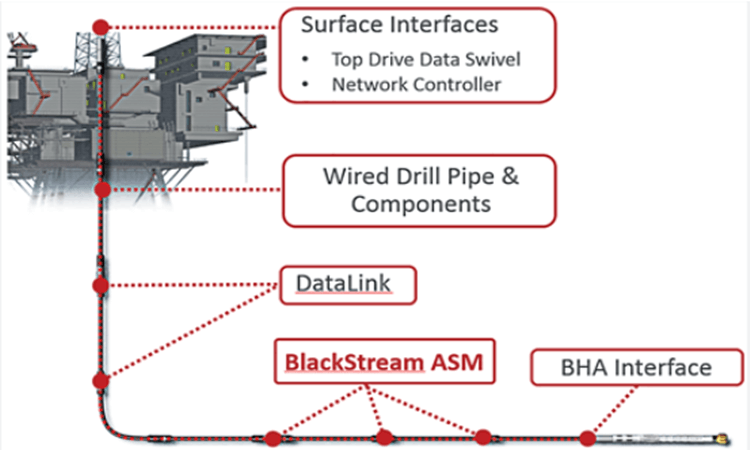How is drill pipe produced
Drill pipe material selection
Easy-to-exploit oil and gas resources are constantly being consumed, and the number of oil and gas wells with harsh geological conditions is increasing year by year. Drill pipes need to withstand the test of high temperature and pressure, chemical corrosion, high-strength tensile force and twisting downhole; drilling fluid and annulus are reversely discharged in the pipe body. The mud mixed with sand and gravel continuously impacts and wears the drill pipe under large displacement and high pressure. How does the drill pipe withstand it? Good quality starts with the raw materials: most drill pipe manufacturers do not make steel by themselves and often turn to steel. The factory orders raw materials (steel pipes and joints). After receiving the order, the drill pipe manufacturer selects the steel ratio plan based on the design requirements. Commonly used is "chromium-molybdenum steel". In order to meet specific requirements, elements such as nickel, silicon, and vanadium are also added. The steel factory will produce and supply the drill pipe factory according to the proportioning plan. Drill pipes comply with the APl5DP (American Petroleum Institute, American Petroleum Institute) standard, which classifies steel materials according to strength into E75, X95, G105, S135, and some even use V150. The higher the grade of steel, the stronger it is. Adding different elements such as carbon, chromium, manganese, and molybdenum to steel can improve the strength and hardness of the steel, and can also improve high-temperature mechanical properties, making it have good oxidation resistance and corrosion resistance. The selection of drilling tool steel grade needs to be "adapted to local conditions". The higher the grade of steel, the greater the mechanical strength, including tensile strength, torsion resistance, extrusion strength and other properties will be improved. But at the same time, the increase in carbon content will also bring adverse effects: on the one hand, the corrosion resistance of steel becomes worse, so some wells containing xenon sulfide, sulfur dioxide and carbon dioxide cannot be used; on the other hand, On the other hand, the shape and toughness of the drilling tool will become worse. Therefore, when proportioning the elements, the strength, toughness and plasticity of the steel must be comprehensively considered, and a reasonable selection must be made according to the construction requirements.

Drill pipe processing procedure
The production of drill pipe roughly includes three parts: pipe body processing, tool joint processing, friction butt welding and subsequent processing.
1. Drill pipe body processing and pipe end thickening
The pipe body material of oil drill pipe is low carbon alloy steel. The continuously cast and rolled round steel billet is heated by a large rotary furnace and then enters the stretching machine and the mandrel automatic punching machine for shaping. After being heated again, the inner and outer diameters are finished and straightened into the pier. Forging process. Since the welding part of the oil drill pipe is the weakest link during use, the ends of the seamless pipe must be thickened before welding to increase the thickness to improve the strength of the weak part and make the welding part The overall strength is greater than the overall strength of the pipe body. According to different pipe diameters, it is generally divided into three types: internal and external thickening, internal thickening, and external thickening, among which the internal and external thickening types are the main ones. The process of thickening the pipe end is to first heat and evenly heat the pipe end of the seamless pipe; secondly, the pipe end is pierced using hydraulic or pneumatic methods. The outer surface is formed by a mold, and the inner surface is naturally formed by the temperature gradient; Finally, the entire pipe body is heat treated, straightened, and inspected by non-destructive testing. The key technology for thickening the pipe end is the formation of the inner surface transition zone, because this part is the weakest and has the most complex stress during use. About 70% of accidents occur in this part, so it is very important to the quality of the drill pipe. .
2. Drill pipe tool joint processing
The material of the tool joint is generally medium carbon alloy steel. The blank is heated and stamped in three times, and then machined after normalizing. First, the inner hole, outer circle, and end face of the blank are turned. Secondly, the joints are quenched and tempered to obtain comprehensive mechanical properties. Finally, the joints are threaded. The threaded parts must be copper plated or phosphated to prevent Sticking phenomenon occurs during use. The quality of joints lies in the two key processes of heat treatment and thread processing. The thermal management structure directly affects the mechanical properties of the joints. Therefore, advanced drill pipe factories use fully automatic continuous controllable gas xenon protection heating, oil or water The base quenching agent is used for quenching, and the reducing gas xenon is used for protection during the joint heating process to ensure that the workpiece does not oxidize, decarburize and carburize. After the joints are quenched and tempered, surface hardness testing and magnetic particle testing are performed one by one. Thread processing is performed after heat treatment. The drill pipe thread is a coarse tapered thread. In the connection process of the drill pipe, the thread plays a key role. Therefore, thread processing is mostly carried out using high-precision CNC machine tools. The thread pitch, pitch, taper, pitch and other parameters of the processed joints are measured one by one to ensure the thread buckle shape and accuracy requirements, thus effectively ensuring the quality of the drill pipe joint. Connection performance.
3. Drill pipe friction butt welding and subsequent processing
Friction butt welding of drill pipe is an important part of the entire drill pipe production. In order to ensure the welding quality, almost all drill pipe factories use fully automatic friction welding machines and are equipped with welding parameter monitoring devices to monitor the friction time during the welding process. , friction pressure, upsetting pressure, upsetting time, shortening and other parameters are automatically monitored and recorded to ensure weld quality. After welding, the welding burrs need to be removed, the welding heat affected zone should be tempered, and the weld should be inspected by non-destructive testing. Among them, the quenching and tempering heat treatment of the weld is very important. Almost all manufacturers use medium frequency heating to perform it, and automatically record parameters such as heating temperature, heating time, holding time, and quenching time. The advantages of this kind of weld heat treatment are: the heating heat-affected zone is narrow and the heating time is short; the structure of the welding zone is uniform and stable, and the performance is reliable; the residual stress on the surface of the welding zone is small.
Generally speaking, there are three factors that determine the quality of drill pipes: the formula of raw materials, differences in key production process technologies, and quality inspection control.
Supplier of drill pipe
Sino mechanical equipment is a high-quality, trustworthy supplier of drill pipe.


